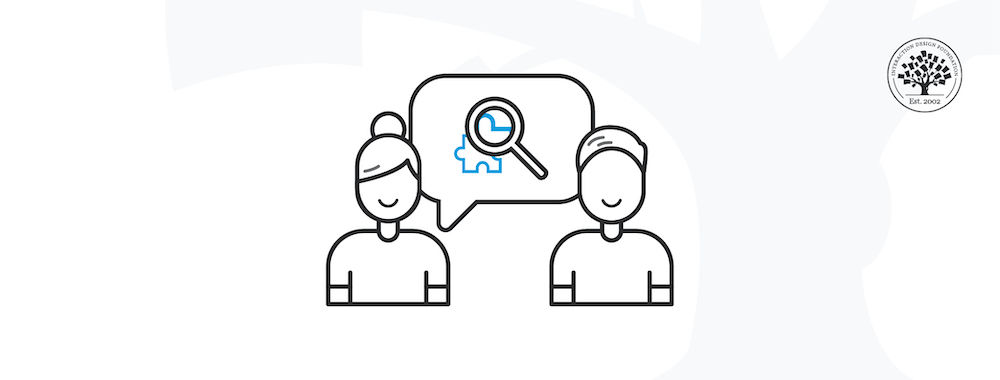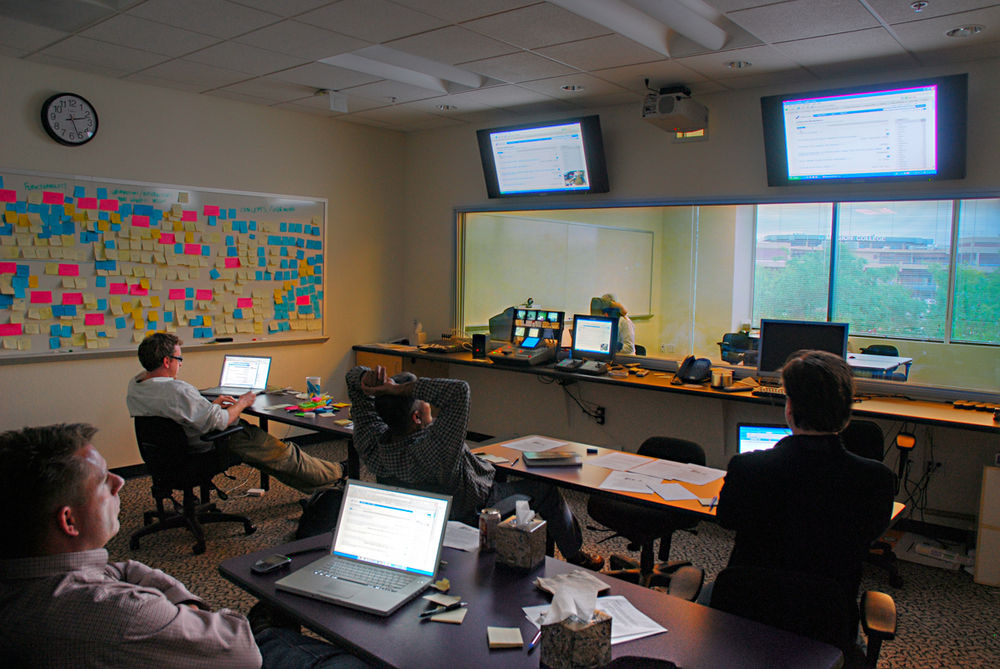User Experience design, like so many other disciplines, has a lower representation of women as compared to men. Things are changing now, though. Slowly, but surely. From strategy to tactics and from ideas to actionable tips, here is a curated playlist of talks by, and stories of just some of the most influential voices in business, technology and design.
“How often do you use a voice assistant like Siri, Alexa or even Cortana?” asks Kriti Sharma in her talk, How to keep human bias out of AI. Each of these voice assistants, she continues, is designed to behave like female servants, at whom you can bark orders, such as “play music” or “switch off the lights”. On the other hand, “male” AI assistants such as IBM Watson, Salesforce Einstein and ROSS the robot lawyer are high-powered geniuses who help businesses and decision-makers.
What impact do these design decisions — about what an AI should sound like — have on children, when they repeatedly see assistants portrayed as obedient females, and business decision-makers as male?
What about an AI algorithm that parses resumes to decide which candidates to shortlist for a job? If historically, managers have only hired males for a certain role, the AI may well interpret the existing data to mean males are preferred (or worse, better) for the role, and filter out deserving candidates.
Across the world, several communities have been excluded from decision-making roles on account of dangerous stereotypes based on gender, sexual orientation, physical abilities and ethnicity. The last thing we need is for AI to aggravate inequality.
As designers who work closely with technology, it is our responsibility to ensure we design for everyone. And the first place to begin is to include diverse voices within the design community and in decision-making roles.
While women+ employees and professionals continue to face challenges in the workplace, things have started to turn around in the recent past. There are now more diverse voices in powerful positions and the metaphorical glass ceiling is slowly, but steadily being chipped.
Here is a round-up of stories of and by some of the many women making their mark and inspiring a new generation of designers.
Table of contents
- 1. Kriti Sharma on How To Keep Human Bias Out of AI
- 2. Rochelle King on the Complex Relationship Between Data and Design in UX
- 3. Margaret Gould Stewart on the Challenges of Designing at Scale
- 4. Rebecca Knill on Accessibility
- 5. Laura Klein on Starting Small
- 6. Indi Young on a Practical Type of Empathy
- 7. Elizabeth Churchill on Design Systems
- 8. Giorgia Lupi on Using Data To Tell Human Stories
- References and Where to Learn More
- Images
1. Kriti Sharma on How To Keep Human Bias Out of AI
Kriti Sharma is an AI technologist and the founder of AI for Good, an organization that focuses on building scalable technology solutions for social good. Her projects include AI applications to bring healthcare to rural women in the Democratic Republic of Congo and to help victims of domestic violence in South Africa.
“The good news about AI is that it is entirely within our control. We get to teach the right values, the right ethics to AI. So there are three things we can do. One, we can be aware of our own biases and the bias in machines around us. Two, we can make sure that diverse teams are building this technology. And three, we have to give it diverse experiences to learn from.”
— Kriti Sharma, AI technologist
2. Rochelle King on the Complex Relationship Between Data and Design in UX
Rochelle King is the Vice President, Creative Production at Netflix. She is also a Board member of several organizations including Sing for Hope, an organization that produces creative programs for people in community spaces worldwide; Ellevest, a financial investment platform focused on Women+ that aims to close the gender wealth gap; and Center for Justice and Accountability, a non-profit organization that is on a mission to deter torture, war crimes and crimes against humanity.
Before her current role at Netflix, Rochelle was the Global VP of User Experience and Design at Spotify, where she managed the teams that were responsible for user research and product experience. In this talk, she explains how her team used the power of data to redesign the interfaces of Spotify.
“… (data can) engage us in an ongoing conversation where it helps us to hone and refine our customer instincts over time... Designers need to think about asking the right questions, but also then taking that data and measuring the results. And they have to be able to understand the nuances of that data. Data can then help to empower and inform the designers to help make the right decisions.”
— Rochelle King, Experience Architect
3. Margaret Gould Stewart on the Challenges of Designing at Scale
Margaret Gould Stewart is the VP of Product Design at Facebook, and previously was the Global Head of Design for YouTube. Having worked on two of the largest digital products in the world, she describes the challenges of designing for products that are used by over a billion people. Even the smallest changes on an interface — such as the “like” button on Facebook, or the rating system at YouTube — can lead to massive pushbacks from users. In this talk, Margaret sheds light on how her team dealt with these challenges.
“... (designing at scale) requires a combination of two things, audacity and humility — the audacity to believe that the thing that you're making is something that the entire world wants and needs, and humility to understand that as a designer, it's not about you or your portfolio, it's about the people that you're designing for, and how your work just might help them live better lives.”
— Margaret Gould Stewart, User Experience Design Master
Data is everywhere, and every designer we’ve featured here talks about it in different ways. Learn more about how to interpret and design with data in user research and usability testing in this course by William Hudson:
Data-Driven Design: Quantitative Research for UX.
4. Rebecca Knill on Accessibility
Rebecca Knill is a business systems consultant manager for Wells Fargo, a writer and a self-described part-time cyborg. She has cochlear implants — 32 chips in her head — that enable her to hear. In this humorous talk, she shares what it’s like to live as a deaf person and how accessible design has evolved over the years. Rebecca Knill urges designers to make accessible products, not out of pity for people with disabilities, but from a place of acceptance. Treat disabled people as part of the community, as equals.
“Hearing people assume that the Deaf live in a perpetual state of wanting to hear, because they can't imagine any other way. But I've never once wished to be hearing. I just wanted to be part of a community like me. I wanted everyone else to be deaf. I think that sense of belonging is what ultimately connects our stories, and mine felt incomplete.”
— Rebecca Knill, Writer
Make designs accessible from the very beginning, instead of adding accessibility at the end. Frank Spillers teaches you how, in this course:
Accessibility: How to Design for All.
5. Laura Klein on Starting Small
Laura Klein is a product management and user experience design expert. She is the author of Build Better Products and UX for Lean Startups and the co-host of the podcast What is Wrong with UX. Here she talks directly to founders and teams that want to build the next Facebook or Slack or Airbnb. Each of these tech giants started small, had very specific objectives and didn’t focus on scalability. Laura warns about the pitfalls of starting big, and shares tips on how you can build small and learn before you grow.
“Every product has a first customer. You need to focus on the experience for that first customer. Make that first customer’s experience fantastic. And the hundredth. And the thousandth and the 10,000th before you even start to think about the billionth. Because you will never get to the billion if you don’t make that first hundred happy.”
— Laura Klein, Product Management Expert
6. Indi Young on a Practical Type of Empathy
Indi Young is an empathy researcher, founding partner of Adaptive Path and author of Mental Models and Practical Empathy. Businesses often treat empathy as a fuzzy buzzword: it's not something that can be called on at will and hence is not practical at work. In this insightful talk, Indi points out that there are different types of empathy, including fuzzy ones, and one which is reliable, replicable, has structure and is practical for businesses.
“(In cognitive empathy) we’re not talking about a user, we’re talking about a person. And we’re not talking about needs, we’re talking about what’s going through their head.”
— Indi Young, Qualitative Data Scientist
Empathy is a key component of Design Thinking. Learn more about how you can empathize with the people you design for and how to define problems and generate, prototype and test ideas in the course:
Design Thinking: The Ultimate Guide.
7. Elizabeth Churchill on Design Systems
Elizabeth Churchill is a Director at Google and has formerly headed the research teams at eBay and Yahoo! In this talk, Elizabeth takes us behind the scenes and reveals, in great detail, how her team built Google’s Material Design and the research that went into it.
“Design Systems don’t tell you what to do. They guide you and they invite exploration. Design Systems really are generative. They’re about inspiration.”
— Elizabeth Churchill, Research Scientist and UX Leader
Feel inspired to explore qualitative user research? Check out our course:
User Research – Methods and Best Practices.
8. Giorgia Lupi on Using Data To Tell Human Stories
Giorgia Lupi is the founder of Accurat, a global data-driven research, design and innovation firm, and the co-author of Dear Data.
In this fascinating story, Giorgia illustrates how data is the means to an end. People are not interested in data for the sake of it, because numbers are never the point. What matters are the real stories and human connections underneath the data.
“... to really understand data and their true potential, sometimes we actually have to forget about them and see through them instead. Because data are always just a tool we use to represent reality. They're always used as a placeholder for something else, but they are never the real thing.”
— Giorgia Lupi, Information Designer
Learn how to represent data truthfully in this course by Prof Alan Dix:
Information Visualization.
References and Where to Learn More
Check out our list of podcasts to discover more diverse voices:
https://www.interaction-design.org/literature/arti...
Here is another curated list of TED talks for designers: https://www.interaction-design.org/literature/arti...
Images
Hero Image: © TED, Mind the Product, Lean Startup Co. and O’Reilly, Fair Use.












